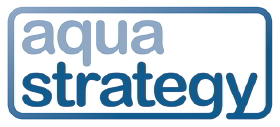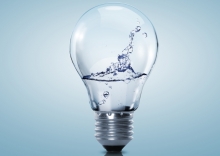- News
Issue:
The European Environment Agency has released findings of an assessment of national progress on the efficient use of resources and has highlighted a lack of progress in adopting circular economy policies.
The assessment covered 32 countries and focused on material resources such as biomass, minerals, metal ores and fossil energy materials. According to the EEA, most countries reported a focus on closing material loops, especially waste management, recycling and prevention. ‘Fewer countries looked at the circular economy as a broader concept, and very few reported already having a policy document specifically on the circular economy and closing material loops,’ the EEA found.
Circular economy policies are important as these are likely to form the overall framework for actions that will affect water, in terms of its use as a resource in circular economy activities such as reuse and in terms of actions that will protect the aquatic environment such as efficient use and recycling of nutrients.
According to the EEA’s report on the assessment, ‘More from less – material resource efficiency in Europe’, most circular economy initiatives are targeted at waste and secondary raw materials and at the abiotic part of the economy. ‘Only two countries explicitly commented that the circular economy requires going beyond increasing recycling rates and a higher use of secondary raw materials,’ the report states. It recommends looking at how policies on the transition to a circular economy should encourage initiatives beyond waste and recycling.
The assessment focused on material resources entering or leaving the economy and covering biomass, non-metallic minerals, metal ores and fossil energy materials, and secondary raw or waste-derived materials. Broader resource efficiency was only covered by an optional question in the assessment, encompassing aspects such as water, land, soil, marine resources and biodiversity. This focus reflects the European Commission’s circular economy package launched in December, which focused on action on chemicals, plastics, food waste, construction, critical raw materials, industrial and mining waste, consumption and public procurement, with fertilisers and water reuse to be dealt with later.
Concerns raised by the EEA include the fact that key concepts such as resource efficiency and the scope of material resources are not clearly defined in either national policies or at the EU level. ‘There is no uniform definition or even implicit understanding of key terms such as materials, raw materials or resources in EU policy documents that deal with resource efficiency and raw materials,’ it also notes.
The EU’s critical list of raw materials includes phosphates, which from a water perspective represent an environmental concern and one of the main areas in which water and wastewater utilities can contribute to a circular economy approach. ‘No countries reported having targets for reducing the use of primary materials (metals, minerals or biomass), or for specific materials, including those on the EU list of critical raw materials,’ the EEA found.
The EEA also raised concerns around how to go about measuring progress towards a circular economy. ‘Indicators on material use and/or resource efficiency that are currently available or in use do not seem well suited to measuring the environmental effects of material use or the decoupling of resource use from economic growth and its impacts,’ it found.
More information:
‘More from less – material resource efficiency in Europe. 2015 overview of policies, instruments and targets in 32 countries’, EEA Report No 10/2016
Keywords:
- Europe, resource recovery






